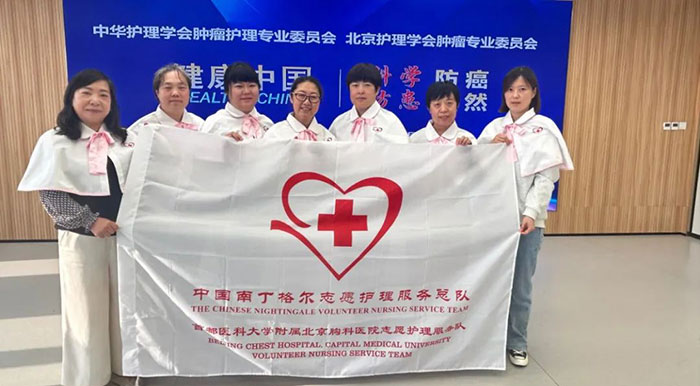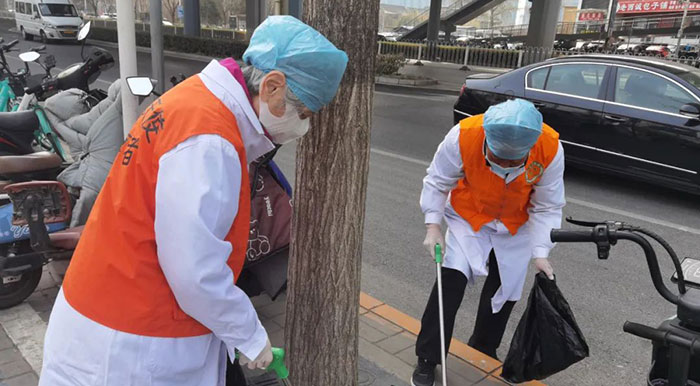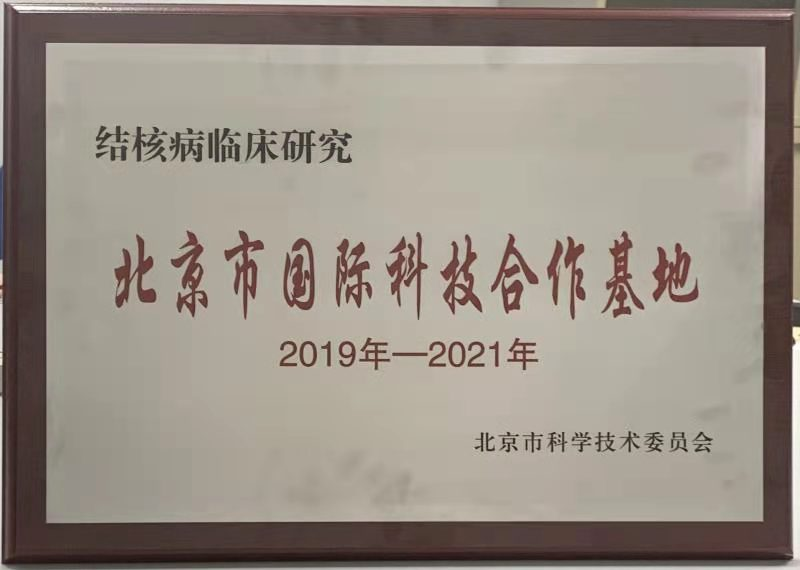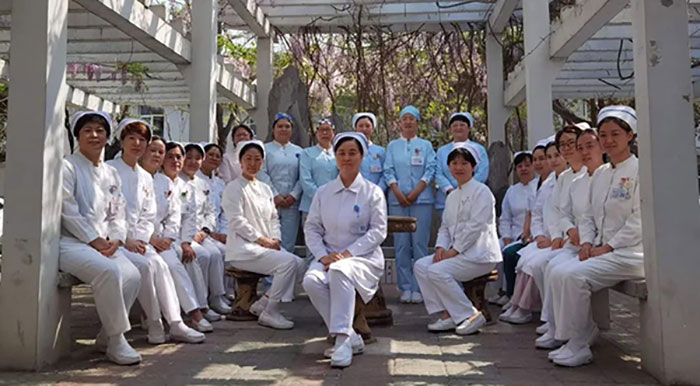2020年
No.4
Medical Abstracts ( IF > 20)
1. Cell. 2020 Oct 29;183(3):752-770.e22. doi: 10.1016/j.cell.2020.09.062.
M. tuberculosis Reprograms Hematopoietic Stem Cells to Limit Myelopoiesis and
Impair Trained Immunity.
Khan N(1), Downey J(1), Sanz J(2), Kaufmann E(1), Blankenhaus B(3), Pacis A(4),
Pernet E(1), Ahmed E(5), Cardoso S(3), Nijnik A(6), Mazer B(5), Sassetti C(7),
Behr MA(8), Soares MP(3), Barreiro LB(4), Divangahi M(9).
Author information:
(1)Meakins-Christie Laboratories, Department of Medicine, Department of
Microbiology and Immunology, Department of Pathology, McGill University,
Montreal, QC, Canada; McGill International TB Centre, McGill University Health
Centre, Montreal, QC, Canada.
(2)Department of Theoretical Physics, University of Zaragoza, Institute BIFI for
Bio-computation and Physics of Complex Systems, University of Zaragoza,
Zaragoza, Spain.
(3)Instituto Gulbenkian de Ciencia, Oeiras, Portugal.
…
A greater understanding of hematopoietic stem cell (HSC) regulation is required
for dissecting protective versus detrimental immunity to pathogens that cause
chronic infections such as Mycobacterium tuberculosis (Mtb). We have shown that
systemic administration of Bacille Calmette-Guérin (BCG) or β-glucan reprograms
HSCs in the bone marrow (BM) via a type II interferon (IFN-II) or interleukin-1
(IL1) response, respectively, which confers protective trained immunity against
Mtb. Here, we demonstrate that, unlike BCG or β-glucan, Mtb reprograms HSCs via
an IFN-I response that suppresses myelopoiesis and impairs development of
protective trained immunity to Mtb. Mechanistically, IFN-I signaling
dysregulates iron metabolism, depolarizes mitochondrial membrane potential, and
induces cell death specifically in myeloid progenitors. Additionally, activation
of the IFN-I/iron axis in HSCs impairs trained immunity to Mtb infection. These
results identify an unanticipated immune evasion strategy of Mtb in the BM that
controls the magnitude and intrinsic anti-microbial capacity of innate immunity
to infection.
Copyright © 2020 The Author(s). Published by Elsevier Inc. All rights reserved.
DOI: 10.1016/j.cell.2020.09.062
PMCID: PMC7599081
PMID: 33125891
Conflict of interest statement: Declaration of Interests The authors declare no
competing interests.
2. Cell. 2020 Oct 15;183(2):347-362.e24. doi: 10.1016/j.cell.2020.08.053.
A Phase Ib Trial of Personalized Neoantigen Therapy Plus Anti-PD-1 in Patients
with Advanced Melanoma, Non-small Cell Lung Cancer, or Bladder Cancer.
Ott PA(1), Hu-Lieskovan S(2), Chmielowski B(2), Govindan R(3), Naing A(4),
Bhardwaj N(5), Margolin K(6), Awad MM(7), Hellmann MD(8), Lin JJ(9), Friedlander
T(10), Bushway ME(11), Balogh KN(11), Sciuto TE(11), Kohler V(11), Turnbull
SJ(11), Besada R(11), Curran RR(11), Trapp B(11), Scherer J(11), Poran A(11),
Harjanto D(11), Barthelme D(11), Ting YS(11), Dong JZ(11), Ware Y(11), Huang
Y(11), Huang Z(11), Wanamaker A(11), Cleary LD(11), Moles MA(11), Manson K(11),
Greshock J(11), Khondker ZS(11), Fritsch E(11), Rooney MS(11), DeMario M(11),
Gaynor RB(11), Srinivasan L(12).
Author information:
(1)Dana Farber Cancer Institute, Brigham and Women's Hospital, and Harvard
Medical School, Boston, MA, USA. Electronic address:
patrick_ott@dfci.harvard.edu.
(2)Department of Medicine, University of California, Los Angeles, Los Angeles,
CA, USA.
(3)Washington University School of Medicine, St. Louis, MO, USA.
…
Neoantigens arise from mutations in cancer cells and are important targets of
T cell-mediated anti-tumor immunity. Here, we report the first open-label, phase
Ib clinical trial of a personalized neoantigen-based vaccine, NEO-PV-01, in
combination with PD-1 blockade in patients with advanced melanoma, non-small
cell lung cancer, or bladder cancer. This analysis of 82 patients demonstrated
that the regimen was safe, with no treatment-related serious adverse events
observed. De novo neoantigen-specific CD4+ and CD8+ T cell responses were
observed post-vaccination in all of the patients. The vaccine-induced T cells
had a cytotoxic phenotype and were capable of trafficking to the tumor and
mediating cell killing. In addition, epitope spread to neoantigens not included
in the vaccine was detected post-vaccination. These data support the safety and
immunogenicity of this regimen in patients with advanced solid tumors
(Clinicaltrials.gov: NCT02897765).
Copyright © 2020 Elsevier Inc. All rights reserved.
DOI: 10.1016/j.cell.2020.08.053
PMID: 33064988
3. Cell. 2020 Oct 15;183(2):303-304. doi: 10.1016/j.cell.2020.09.052.
Blood-Based Biomarkers for Predicting Immunotherapy Benefit in Lung Cancer.
Camidge DR(1), Schenk EL(2).
Author information:
(1)Division of Medical Oncology, Department of Medicine, University of Colorado,
Anschutz Medical Campus, Aurora, CO, USA. Electronic address:
ross.camidge@cuanschutz.edu.
(2)Division of Medical Oncology, Department of Medicine, University of Colorado,
Anschutz Medical Campus, Aurora, CO, USA.
PD1/PD-L1-directed immunotherapy, alone or in combination with chemotherapy,
dominates the initial treatment of metastatic non-small cell lung cancer.
However, our ability to predict who will benefit from these approaches is
limited. In this issue of Cell, Nabet et al. report a novel, blood-based
methodology to more accurately predict durable disease control with
immunotherapy.
Copyright © 2020 Elsevier Inc. All rights reserved.
DOI: 10.1016/j.cell.2020.09.052
PMID: 33064985
4. Clin Microbiol Rev. 2020 Oct 14;34(1):e00141-20. doi: 10.1128/CMR.00141-20.Print 2020 Dec 16.
Mechanisms of Drug-Induced Tolerance in Mycobacterium tuberculosis.
Goossens SN(1), Sampson SL(2), Van Rie A(3).
Author information:
(1)Family Medicine and Population Health (FAMPOP), Faculty of Medicine and
Health Sciences, University of Antwerp, Wilrijk, Belgium
sander.goossens@uantwerpen.be.
(2)DSI/NRF Centre of Excellence for Biomedical Tuberculosis Research/SA MRC
Centre for Tuberculosis Research, Division of Molecular Biology and Human
Genetics, Faculty of Medicine and Health Sciences, Stellenbosch University, Cape
Town, South Africa.
(3)Family Medicine and Population Health (FAMPOP), Faculty of Medicine and
Health Sciences, University of Antwerp, Wilrijk, Belgium.
SUMMARYSuccessful treatment of tuberculosis (TB) can be hampered by
Mycobacterium tuberculosis populations that are temporarily able to survive
antibiotic pressure in the absence of drug resistance-conferring mutations, a
phenomenon termed drug tolerance. We summarize findings on M. tuberculosis
tolerance published in the past 20 years. Key M. tuberculosis responses to drug
pressure are reduced growth rates, metabolic shifting, and the promotion of
efflux pump activity. Metabolic shifts upon drug pressure mainly occur in M.
tuberculosis's lipid metabolism and redox homeostasis, with reduced
tricarboxylic acid cycle activity in favor of lipid anabolism. Increased lipid
anabolism plays a role in cell wall thickening, which reduces sensitivity to
most TB drugs. In addition to these general mechanisms, drug-specific mechanisms
have been described. Upon isoniazid exposure, M. tuberculosis reprograms several
pathways associated with mycolic acid biosynthesis. Upon rifampicin exposure, M.
tuberculosis upregulates the expression of its drug target rpoB Upon bedaquiline
exposure, ATP synthesis is stimulated, and the transcription factors Rv0324 and
Rv0880 are activated. A better understanding of M. tuberculosis's responses to
drug pressure will be important for the development of novel agents that prevent
the development of drug tolerance following treatment initiation. Such agents
could then contribute to novel TB treatment-shortening strategies.
Copyright © 2020 American Society for Microbiology.
DOI: 10.1128/CMR.00141-20
PMCID: PMC7566895
PMID: 33055230
5. Lancet Oncol. 2020 Oct 27:S1470-2045(20)30475-7. doi:10.1016/S1470-2045(20)30475-7. Online ahead of print.
Biomarker-driven therapies for previously treated squamous non-small-cell lung
cancer (Lung-MAP SWOG S1400): a biomarker-driven master protocol.
Redman MW(1), Papadimitrakopoulou VA(2), Minichiello K(3), Hirsch FR(4), Mack
PC(4), Schwartz LH(5), Vokes E(6), Ramalingam S(7), Leighl N(8), Bradley J(9),
Miao J(3), Moon J(3), Highleyman L(10), Miwa C(11), LeBlanc ML(3), Malik S(12),
Miller VA(13), Sigal EV(14), Adam S(15), Wholley D(15), Sigman C(16), Smolich
B(16), Blanke CD(17), Kelly K(18), Gandara DR(18), Herbst RS(19).
Author information:
(1)SWOG Statistics and Data Management Center, Fred Hutchinson Cancer Research
Center, Seattle, WA, USA; Clinical Research Division, Fred Hutchinson Cancer
Research Center, Seattle, WA, USA. Electronic address: mredman@fredhutch.org.
(2)Department of Thoracic Head and Neck Medical Oncology, Division of Cancer
Medicine, University of Texas MD Anderson Cancer Center, Houston, TX, USA.
(3)SWOG Statistics and Data Management Center, Fred Hutchinson Cancer Research
Center, Seattle, WA, USA; Public Health Sciences Division, Fred Hutchinson
Cancer Research Center, Seattle, WA, USA.
…
BACKGROUND: The Lung Cancer Master Protocol (Lung-MAP; S1400) is a completed
biomarker-driven master protocol designed to address an unmet need for better
therapies for squamous non-small-cell lung cancer. Lung-MAP (S1400) was created
to establish an infrastructure for biomarker screening and rapid regulatory
intent evaluation of targeted therapies and was the first biomarker-driven
master protocol initiated with the US National Cancer Institute (NCI).
METHODS: Lung-MAP (S1400) was done within the National Clinical Trials Network
of the NCI using a public-private partnership. Eligible patients were aged 18
years or older, had stage IV or recurrent squamous non-small-cell lung cancer,
had previously been treated with platinum-based chemotherapy, and had an Eastern
Cooperative Oncology Group (ECOG) performance status of 0-2. The study included
a screening component using the FoundationOne assay (Foundation Medicine,
Cambridge, MA, USA) for next-generation sequencing, and a clinical trial
component with biomarker-driven substudies and non-match substudies for patients
who were ineligible for biomarker-driven substudies. Patients were pre-screened
and received their substudy assignment upon progression, or they were screened
at progression and received their substudy assignment upon completion of
testing. Patients could enrol onto additional substudies after progression on a
substudy. The study is registered with ClinicalTrials.gov, NCT02154490, and all
research related to Lung-MAP (S1400) is completed.
FINDINGS: Between June 16, 2014, and Jan 28, 2019, 1864 patients enrolled and
1841 (98·9%) submitted tissue. 1674 (90·9%) of 1841 patients had biomarker
results, and 1404 (83·9%) of 1674 patients received a substudy assignment. Of
the assigned patients, 655 (46·7%) registered to a substudy. The
biomarker-driven substudies evaluated taselisib (targeting PIK3CA alterations),
palbociclib (cell cycle gene alterations), AZD4547 (FGFR alteration),
rilotumumab plus erlotinib (MET), talazoparib (homologous recombination repair
deficiency), and telisotuzumab vedotin (MET). The non-match substudies evaluated
durvalumab, and nivolumab plus ipilimumab for anti-PD-1 or anti-PD-L1-naive
disease, and durvalumab plus tremelimumab for anti-PD-1 or anti-PD-L1 relapsed
disease. Combining data from the substudies, ten (7·0%) of 143 patients
responded to targeted therapy, 53 (16·8%) of 315 patients responded to anti-PD-1
or anti-PD-L1 therapy for immunotherapy-naive disease, and three (5·4%) of 56
responded to docetaxel in the second line of therapy. Median overall survival
was 5·9 months (95% CI 4·8-7·8) for the targeted therapy groups, 7·7 months
(6·7-9·2) for the docetaxel groups, and 10·8 months (9·4-12·3) for the anti-PD-1
or anti-PD-L1-containing groups. Median progression-free survival was 2·5 months
(95% CI 1·7-2·8) for the targeted therapy groups, 2·7 months (1·9-2·9) for the
docetaxel groups, and 3·0 months (2·7-3·9) for the anti-PD-1 or
anti-PD-L1-containing groups.
INTERPRETATION: Lung-MAP (S1400) met its goal to quickly address
biomarker-driven therapy questions in squamous non-small-cell lung cancer. In
early 2019, a new screening protocol was implemented expanding to all
histological types of non-small-cell lung cancer and to add focus on
immunotherapy combinations for anti-PD-1 and anti-PD-L1 therapy-relapsed
disease. With these changes, Lung-MAP continues to meet its goal to focus on
unmet needs in the treatment of advanced lung cancers.
FUNDING: US National Institutes of Health, and AbbVie, Amgen, AstraZeneca,
Bristol Myers Squibb, Genentech, and Pfizer through the Foundation for the
National Institutes of Health.
Copyright © 2020 Elsevier Ltd. All rights reserved.
DOI: 10.1016/S1470-2045(20)30475-7
PMID: 33125909
6. Nat Med. 2020 Oct 19. doi: 10.1038/s41591-020-1076-0. Online ahead of print.
Discovery and validation of a personalized risk predictor for incident
tuberculosis in low transmission settings.
Gupta RK(1), Calderwood CJ(1), Yavlinsky A(2), Krutikov M(1), Quartagno M(3),
Aichelburg MC(4), Altet N(5)(6), Diel R(7)(8), Dobler CC(9)(10), Dominguez
J(11)(12)(13), …
Author information:
(1)Institute for Global Health, University College London, London, UK.
(2)Institute of Health Informatics, University College London, London, UK.
(3)MRC Clinical Trials Unit, Institute of Clinical Trials and Methodology,
University College London, London, UK.
…
The risk of tuberculosis (TB) is variable among individuals with latent
Mycobacterium tuberculosis infection (LTBI), but validated estimates of
personalized risk are lacking. In pooled data from 18 systematically identified
cohort studies from 20 countries, including 80,468 individuals tested for LTBI,
5-year cumulative incident TB risk among people with untreated LTBI was 15.6%
(95% confidence interval (CI), 8.0-29.2%) among child contacts, 4.8% (95% CI,
3.0-7.7%) among adult contacts, 5.0% (95% CI, 1.6-14.5%) among migrants and 4.8%
(95% CI, 1.5-14.3%) among immunocompromised groups. We confirmed highly variable
estimates within risk groups, necessitating an individualized approach to risk
stratification. Therefore, we developed a personalized risk predictor for
incident TB (PERISKOPE-TB) that combines a quantitative measure of T cell
sensitization and clinical covariates. Internal-external cross-validation of the
model demonstrated a random effects meta-analysis C-statistic of 0.88 (95% CI,
0.82-0.93) for incident TB. In decision curve analysis, the model demonstrated
clinical utility for targeting preventative treatment, compared to treating all,
or no, people with LTBI. We challenge the current crude approach to TB risk
estimation among people with LTBI in favor of our evidence-based and
patient-centered method, in settings aiming for pre-elimination worldwide.
DOI: 10.1038/s41591-020-1076-0
PMID: 33077958
7. Cancer Discov. 2020 Nov 11:CD-20-0263. doi: 10.1158/2159-8290.CD-20-0263. Online ahead of print.
Lower airway dysbiosis affects lung cancer progression.
Tsay JJ(1), Wu BG(1), Sulaiman I(1), Gershner K(2), Schluger R(1), Li Y(1), Yie
TA(3), Meyn P(4), Olsen E(1), Perez L(1), Franca B(1), Carpenito J(1), …
Author information:
(1)Division of Pulmonary, Critical Care, and Sleep Medicine, Department of
Medicine, New York University School of Medicine.
(2)Section of Pulmonary, Critical Care, Allergy and Immunology, Wake Forest
School of Medicine.
(3)Division of Pulmonary, Critical Care, and Sleep Medicine, Department of
Medicine, NYU Langone Medical Center.
…
In lung cancer, enrichment of the lower airway microbiota with oral commensals
commonly occurs and ex vivo models support that some of these bacteria can
trigger host transcriptomic signatures associated with carcinogenesis. Here, we
show that this lower airway dysbiotic signature was more prevalent in group
IIIB-IV TNM stage lung cancer and is associated with poor prognosis, as shown by
decreased survival among subjects with early stage disease (I-IIIA) and worse
tumor progression as measured by RECIST scores among subjects with IIIB-IV stage
disease. In addition, this lower airway microbiota signature was associated with
upregulation of IL-17, PI3K, MAPK and ERK pathways in airway transcriptome, and
we identified Veillonella parvula as the most abundant taxon driving this
association. In a KP lung cancer model, lower airway dysbiosis with V. parvula
led to decreased survival, increased tumor burden, IL-17 inflammatory phenotype
and activation of checkpoint inhibitor markers.
Copyright ©2020, American Association for Cancer Research.
DOI: 10.1158/2159-8290.CD-20-0263
PMID: 33177060
8. Cancer Discov. 2020 Oct 18:CD-20-0282. doi: 10.1158/2159-8290.CD-20-0282. Online ahead of print.
KEAP1/NFE2L2 mutations predict lung cancer radiation resistance that can be
targeted by glutaminase inhibition.
Binkley MS(1), Jeon YJ(2), Nesselbush M(3), Moding EJ(4), Nabet BY(5), Almanza
D(5), Kunder C(6), Stehr H(7), Yoo CH(8), Rhee S(9), Xiang M(10), Chabon JJ(11),
Hamilton E(3), Kurtz DM(12), Gojenola L(13), Owen SG(1), Ko RB(14), Shin JH(15),
Maxim PG(16), Lui NS(17), Backhus LM(17), Berry MF(18), Shrager JB(19),
Ramchandran KJ(20), Padda SK(21), Das M(22), Neal JW(21), Wakelee HA(21),
Alizadeh AA(23), Loo BW(1), Diehn M(24).
Author information:
(1)Department of Radiation Oncology, Stanford University.
(2)Integrative Biotechnology, Sungkyunkwan University.
(3)Cancer Biology Program, Stanford University.
…
Tumor genotyping is not routinely performed in localized non-small cell lung
cancer (NSCLC) due to lack of associations of mutations with outcome. Here, we
analyze 232 consecutive patients with localized NSCLC and demonstrate that KEAP1
and NFE2L2 mutations are predictive of high rates of local recurrence (LR) after
radiotherapy but not surgery. Half of LRs occurred in KEAP1/NFE2L2 mutation
tumors, indicating they are major molecular drivers of clinical radioresistance.
Next, we functionally evaluate KEAP1/NFE2L2 mutations in our radiotherapy cohort
and demonstrate that only pathogenic mutations are associated with
radioresistance. Furthermore, expression of NFE2L2 target genes does not predict
LR, underscoring the utility of tumor genotyping. Finally, we show that
glutaminase inhibition preferentially radiosensitizes KEAP1 mutant cells via
depletion of glutathione and increased radiation-induced DNA damage. Our
findings suggest that genotyping for KEAP1/NFE2L2 mutations could facilitate
treatment personalization and provide a potential strategy for overcoming
radioresistance conferred by these mutations.
Copyright ©2020, American Association for Cancer Research.
DOI: 10.1158/2159-8290.CD-20-0282
PMID: 33071215









.jpg)











